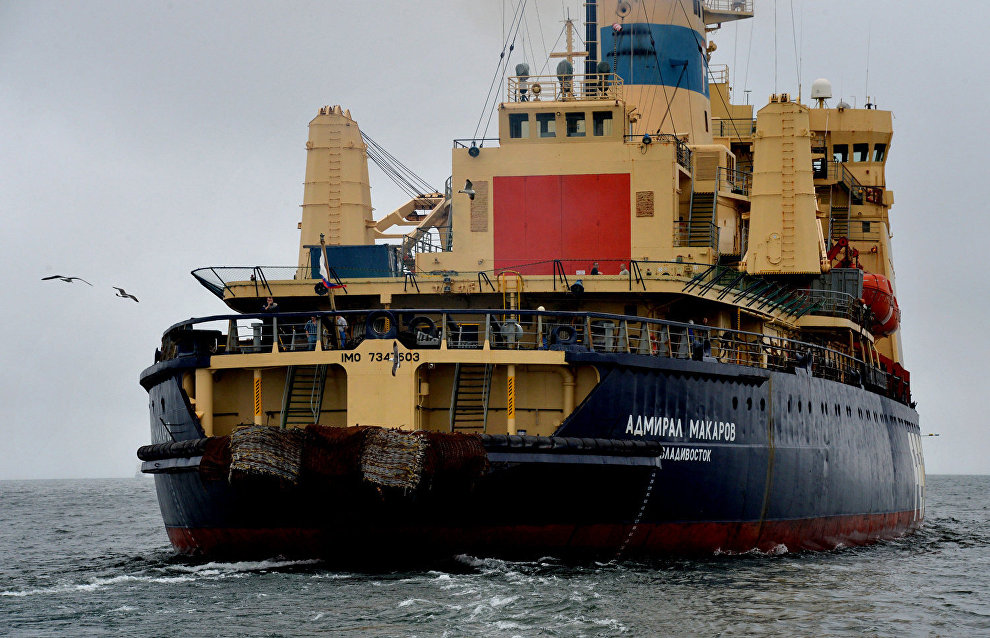Ship convoy reaches Chukotka with materials for floating power plant
A ship convoy, carrying equipment and materials for the hydraulic base of a coastal floating atomic heat and power plant (FAHPP) has arrived in Pevek, Chukotka, RIA Novosti reports.
"The convoy included two icebreakers, the Admiral Makarov and the Kapitan Dranitsyn, and two bulk freighters, the Johann Machmastahl and the Sinegorsk. The freighters are currently being unloaded. <…> The convoy has delivered enough materials to continue construction of the project until the next navigation season starts. These include 4,600 tons of inert materials and about 4,100 tons of welded pipe piles. In addition, the ships delivered products for local businesses," RIA Novosti quotes the region's press service.
According to the governor of the Chukotka Autonomous Area, Roman Kopin, this will allow us to continue working on the base for the FAHPP. The availability of the Northern Sea Route in mid-winter presents opportunities for the region. "This is a good example showing that Chukotka is ready for year-round use of the Arctic route. Eventually, we may not need to rely on the navigation season," Mr. Kopin said.
Under the schedule, the next delivery is expected during the 2017 navigation season. This coastal energy infrastructure is being built by Zapsibgidrostroi Trust which has completed 79% of the piled foundations for the approach dam that will support the FAHPP and 56% of the bank reinforcement work.
The agency reports that the contract for the first 70 MW floating atomic heat and power plant with two KLT-40S reactors was signed by Rosenergoatom and the Baltiysky Zavod shipyard in 2012. The basic shell including superstructure was completed in 2015, followed by the installation of ship and power equipment and technical systems.
The systems and equipment were subjected to initial dock trials in 2016. The power plant will be based in Pevek, Chukotka Autonomous Area. It is planned to complete the coastal and hydrotechnical installation, then tow the floating plant to Pevek, and put it into operation in 2019.
